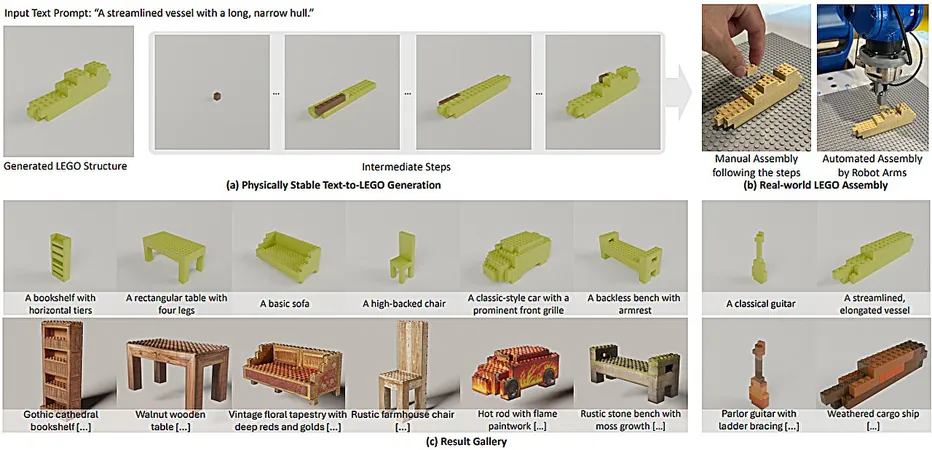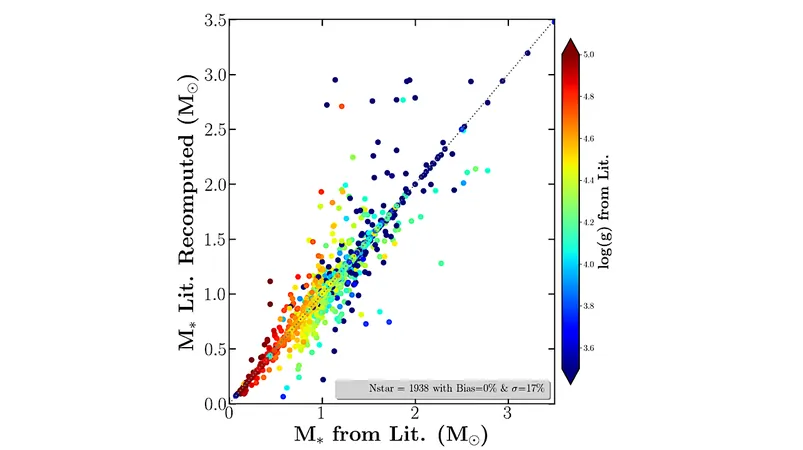
Revolutionizing Building Blocks: Meet LegoGPT, the AI That Crafts Stable LEGO Designs!
2025-05-12
Author: Wei
Introducing LegoGPT: The Future of LEGO Construction
Engineers and AI experts at Carnegie Mellon University have unleashed a groundbreaking application called LegoGPT, capable of designing stable structures using traditional LEGO bricks—simply by interpreting text prompts!
From Concept to Reality: Transforming Words into 3D Structures
In a captivating study published on the arXiv preprint server, the team leveraged a powerful language model from META, known as LLaMA-3.2-1B-Instruct, to create a revolutionary design system. Unlike existing 3D generative models that often produce impractical designs subject to gravity issues, LegoGPT ensures your dream builds can stand tall!
Behind the Magic: How LegoGPT Works
The engineers flipped the script on standard prediction methods, replacing next-word prompts with next-brick predictions to construct stable LEGO configurations. They incorporated a unique mathematical module, factoring in structural forces and gravity, to guarantee physical stability—educating the AI with 47,000 pre-existing stable designs and characteristics, complete with captions from an additional AI system.
Ensuring Stability: The Genius of Recursive Testing
LegoGPT employs a 'recursive' method: as it places each brick, it checks for stability. If adding a brick compromises the structure, it gets removed and a new approach is taken. Initial tests without this rollback feature showed only 24% of designs would stand firm—but with it, that success rate skyrocketed to an impressive 98.8%! The team even enhanced the system's capabilities to include colors and textures.
Testing the Limits: Robots vs. Hand Builders
To put LegoGPT to the ultimate test, the researchers programmed robots to construct designs generated by the AI. They even took to building some structures by hand, ensuring a comprehensive evaluation.
Stepping Ahead: The Competitive Edge of LegoGPT
Not only has LegoGPT demonstrated an ability to produce an impressive variety of stable LEGO structures, but it has also outperformed other AI systems aimed at creating 3D objects, achieving a higher rate of successful builds. This innovation marks a new era in both engineering and recreational building—where imagination meets the precision of AI!

 Brasil (PT)
Brasil (PT)
 Canada (EN)
Canada (EN)
 Chile (ES)
Chile (ES)
 Česko (CS)
Česko (CS)
 대한민국 (KO)
대한민국 (KO)
 España (ES)
España (ES)
 France (FR)
France (FR)
 Hong Kong (EN)
Hong Kong (EN)
 Italia (IT)
Italia (IT)
 日本 (JA)
日本 (JA)
 Magyarország (HU)
Magyarország (HU)
 Norge (NO)
Norge (NO)
 Polska (PL)
Polska (PL)
 Schweiz (DE)
Schweiz (DE)
 Singapore (EN)
Singapore (EN)
 Sverige (SV)
Sverige (SV)
 Suomi (FI)
Suomi (FI)
 Türkiye (TR)
Türkiye (TR)
 الإمارات العربية المتحدة (AR)
الإمارات العربية المتحدة (AR)